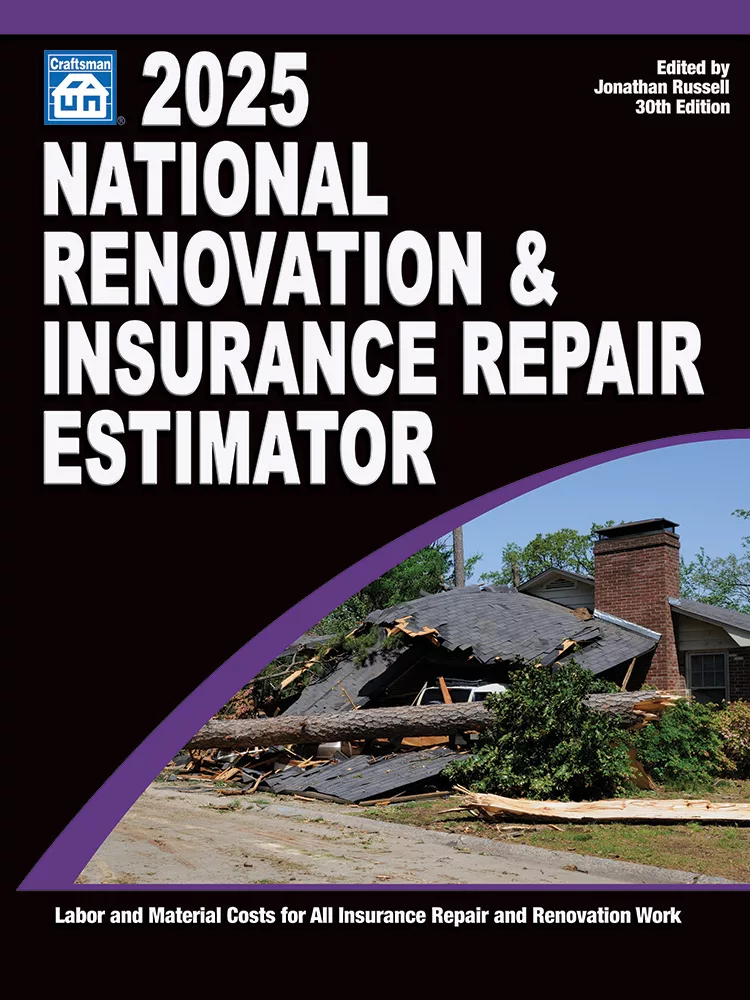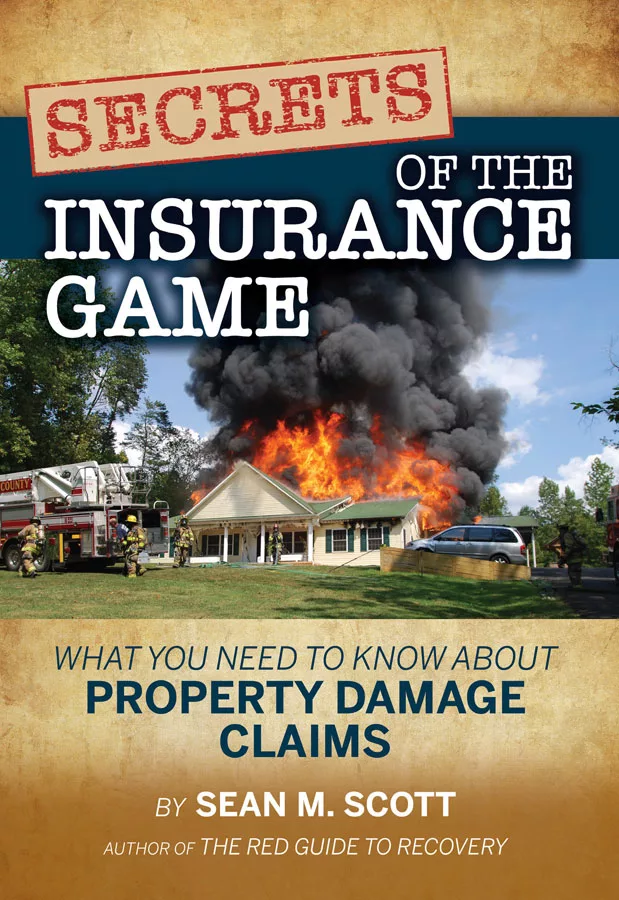Why Every Restoration Firm Needs Professional Liability Insurance
Most restoration contractors have glaring coverage gaps in their liability insurance resulting from professional exclusions.
Some misinformed insurance practitioners will say that restoration contractors are not providers of professional services and therefore do not need professional liability insurance. The smart ones will not put this in writing. Do not listen to this chatter. What those well-intentioned but naive commentators do not know is how exceptionally well what a restoration firm does for a living fits neatly into the professional exclusions commonly found in the liability insurance policies sold to virtually all types of contractors.
Restoration firms actually face a double whammy on their liability insurance policies when it comes to claims involving professional exclusions in their business liability insurance policies.
The first insurance coverage whammy is almost all General Liability (GL) policies sold to contractors of any type will have one or more professional exclusions laced into them. There are more than thirty variations of professional exclusions in common use today on the liability policies sold to contractors.
Professional exclusions in liability insurance policies commonly eliminate the insurance coverage for claims arising from:
- The preparing or approving or failure to approve opinions, reports, work plans, surveys, change orders or specifications
- Supervisory or inspection activities
- The performance of any claim, investigation, adjustment, inspection, appraisal, survey or audit services
- An error, omission, defect or deficiency in any test performed
- Any evaluation, consultation or advice given
- Any reliance upon such test evaluation, consultation or advice
The above listing of excluded “professional” activities was extracted from just one GL insurance policy that is commonly sold to restoration contractors. It is common for remediators to become involved in many of the above described activities in their day-to-day work. If a claim against the restorer alleges that their customer’s damages were caused by any of these excluded activities, all bets can be off on the contractors’ liability insurance coverage because of these exclusions.
Similar exclusions for “professional” causes of loss appear on almost all Contractors Pollution Liability (CPL) insurance policies as well.
The second insurance coverage whammy is the best restoration contractors are going to be IICRC certified for working on water restorations and/or mold remediation projects. On the front cover of the IICRC S500 manual it says “Standard and Reference Guide for Professional Water Damage Restoration.” The IICRC S520 is the “Standard and Reference Guide for Professional Mold Remediation.” I italicized the word “professional” in these titles simply to draw attention to them. The word “professional” is laced throughout both of these IICRC documents, appearing over 100 times in the S500.
Because of the common reference to “professional” in the IICRC standards and guidelines, there can be a direct link between working under these standards and the professional exclusions in your liability insurance policies. Here is how that happens: If an injured party wants to convince a court that you owe them money for the damages you allegedly caused them, among other things the injured party needs to show to the court that you, your employee or subcontractor failed to act as a reasonable and prudent person. One handy way for a disgruntled customer to accomplish this task is to claim that you failed to follow the generally accepted professional standards and guidelines in the restoration business.
Once the word “professional” appears in an insurance claim, any neophyte claims adjuster at your insurance company will find the professional exclusion in your GL and/or CPL insurance policy. When these facts line up as I have laid out here, your liability insurance coverage can evaporate simply by your insurance company connecting the dots between the allegations in the complaint against you and the professional exclusions in the insurance policies they sold you.
Under these circumstances, your liability insurance coverage can evaporate - not because of what you did and how you did it at the job site. The professional exclusion in your insurance policy can be triggered by how the plaintiffs decide to describe your actions in making their claim for damages against you.
Feeling uncomfortable yet? You should be - nobody buys insurance merely to roll the dice on coverage based upon how the disgruntled customer decides to describe what you did in justifying their demand for damages. This is another whammy insurance companies built into the policies they sell to restoration firms and did not tell anybody what they were up to.
Your insurance agent likely knows about the professional exclusion in your liability insurance policies. What they will not know unless you tell them is that you perform many of the excluded services listed on professional exclusions on a day to day basis. For an insurance agent to figure out the connection between the services you provide and the professional exclusions in the insurance policies they sell to you, the insurance agent needs to know what you do for a living relative to what the professional exclusions say. You likely need to be proactive and help them gain that understanding.
Based on the preponderance of restoration firms that we see rated as janitorial firms on their GL insurance, it is safe to say the vast majority of insurance agents do not understand what restoration contractors do for a living. This knowledge gap on the part of insurance agents country-wide explains why so many restoration firms are needlessly uninsured for claims related to “professional” services today.
A little bit of self-help on your part can cure a lot of insurance coverage defects, so be sure to tell your insurance agent if you are performing the excluded professional services on your insurance policies. If that is the case, show your insurance agent the IICRC S500 and S520 books pointing to the word “professional” on the cover. There should be some reaction by your insurance agent to what is likely to be new information to them. Most insurance agents have never heard of the IICRC nor would they know that your day to day interface with insurance claims may trigger many of the operative words in professional exclusions on your insurance policies. There is no way for your insurance agent to connect the dots between what you do for a living and the effects of professional exclusions in your liability insurance policies unless you tell them. There are no books published for insurance agents on how to insure a restoration contractor.
Here’s how to solve the insurance coverage gap for professional services:
1. Check to see what is excluded by the professional exclusions in your GL and CPL policy. If you do not have professional exclusions on these policies, you may not have an insurance problem at all. However even without professional exclusions, if you are performing fee for service consulting services from which you will not perform operations, a Professional Liability (PL) policy is still advisable.
2. If you have purchased a combined GL/CPL/PL insurance package designed specifically for a restoration firm, the PL insurance has been fixed if the policy is of good quality. Only about one out of 10 restoration firms have this insurance coverage solution in place today.
3. If you are part of the 90% of firms who are going bare on this coverage, you need to fix the coverage gap somehow. That will involve buying additional insurance for Professional Liability.
Recently there was a lot of chatter going around the restoration business that PL coverage was unavailable to restoration contractors. Nothing could be further from the truth. Our insurance customers have had professional coverage for their work under the IICRC standards for more than 10 years. What set off the chatter was a poorly written insurance specification by one of the big franchises that required coverage extensions which were taboo in the global insurance market place for PL insurance. Good PL coverage is readily available for restoration firms as long as taboo coverage provisions are avoided.
How much does Professional Liability insurance cost on a restoration contracting firm?
It might be free! It has actually been free for many years on modern liability insurance policies sold to restoration firms.
If you have purchased a package liability insurance policy with GL, CPL and PL parts all built in, the incremental cost for the professional coverage in that policy is close to nothing. The underwriters selling these policies expect to insure you for work as a restoration contractor and have already corrected for the professional services coverage glitches in the higher quality package polices at no incremental premium.
Things get more complicated if you have separate GL and CPL policies in place, both of which normally exclude losses arising from professional services. There are all sorts of insurance coverage issues that this antique insurance design raises, only one of which is that you are likely uninsured for claims related to your “professional” work. Ignoring the other fatal coverage flaws in purchasing separate GL and CPL policies (See my “Beware Category 3 Water Is Uninsured” article in the November 2013 R&R) you may be able to buy a CPL policy without a fungus/mold/bacteria/Category 3 water exclusion for about 1% of your gross revenue at a minimum cost of about $2,000.
Another option to fill the PL coverage gap is to purchase a combined CPL/Professional policy which can eliminate the need to buy a separate CPL insurance policy. However this option still will not solve the “you cannot be in the Category 3 water restoration business exclusion” hidden within the mold exclusion in GL insurance policies today.
To solve the problem of insurance agents getting the liability insurance coverage designs wrong on 90% of restoration firms today, you should try the simple self-help protocol mentioned above. First, read your professional exclusions in your GL and CPL policies to see if they apply to you. Then, meet with your insurance agent to explain what the IICRC documents are all about. A quick review of the professional exclusions with your insurance agent should put you on the right track to a simple, low-cost solution to a glaring gap in liability insurance coverage that affects the majority of restoration firms.
Looking for a reprint of this article?
From high-res PDFs to custom plaques, order your copy today!






